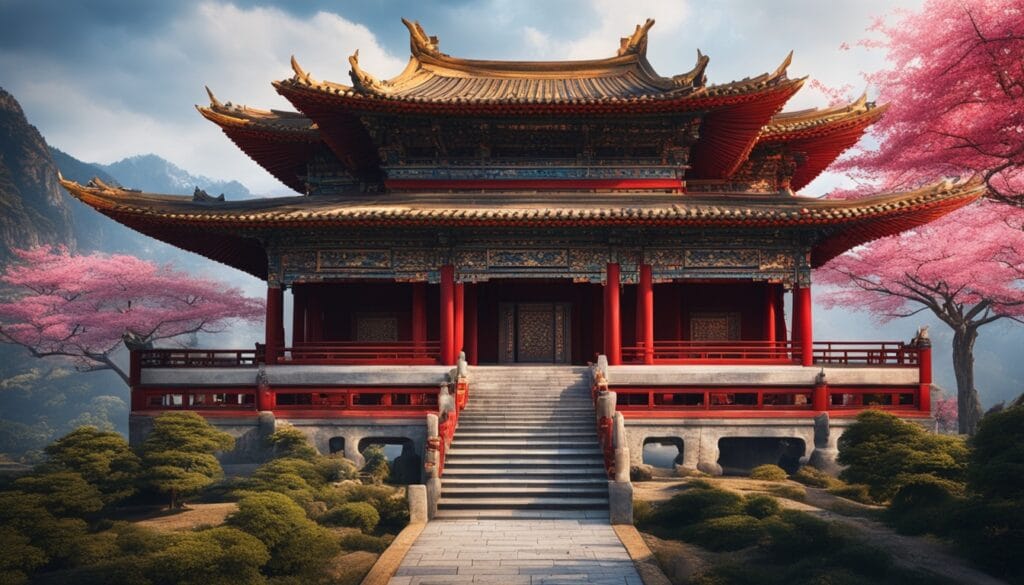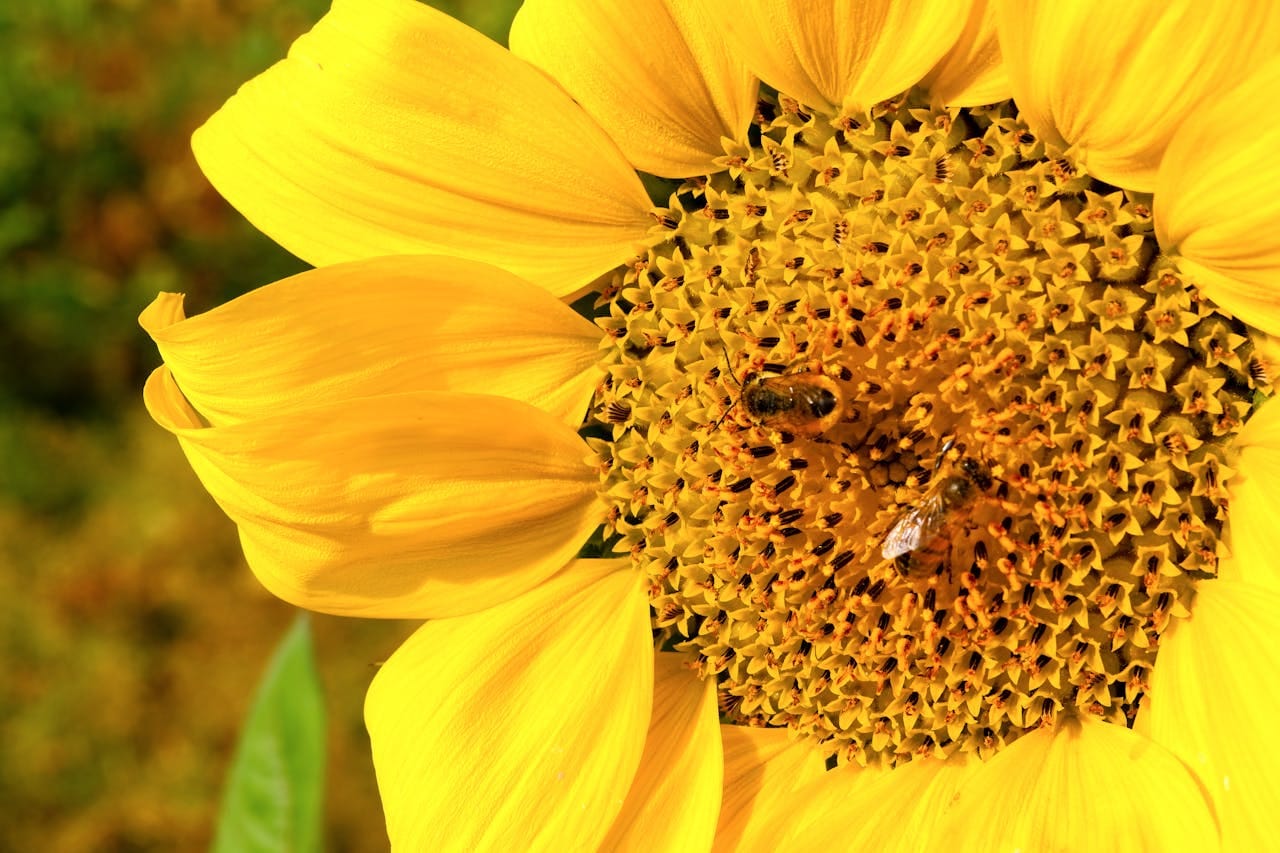Join us on a journey to uncover the world’s fascinating traditions and customs. We’ll explore the rich diversity of cultures globally. From Asia’s vibrant festivals to Africa and the Middle East’s ancient heritage, get ready to dive into a world of shared experiences and unique practices.
This guide will take you on a captivating trip through human civilization. It’s about embracing the power of understanding different cultures. Let’s celebrate the spirit of humanity’s shared legacy together.
Immerse in Diverse Cultural Backgrounds
Exploring different cultures around the world is exciting and enriching. It broadens our views and builds empathy. By diving into diverse cultures, we learn about their customs and practices. This helps us see how culture affects daily life. It also helps us break down stereotypes and embrace the differences, changing how we see human diversity.
Understand Practices and Embrace Differences
Cultural immersion lets us appreciate the details of various cultures. We learn about the gender-equal decision-making practices of the Konyak tribe in India. Or the ancient religious beliefs of the Kalash people in Pakistan. Each culture shows us a new view, challenging our beliefs and widening our understanding.
By embracing these differences, we grow our cultural empathy. This helps us connect with people from different backgrounds. It makes our lives richer and helps build a more inclusive and harmonious global community.
Break Down Stereotypes and Foster Empathy
Cultural immersion helps us break down stereotypes and wrong ideas. When we engage with local communities, we see their customs and practices up close. These are often far from the simple stories we’ve heard.
This deeper understanding cultivates cultural empathy. It lets us value the richness and diversity of human life. By doing this, we help make a world where differences are celebrated and stereotypes are challenged.
Discover Richness of Asian, African, and Arab Cultures
The world is full of different cultures, each with its own languages, rituals, and art. We will explore the amazing cultures of Asia, Africa, and the Arab world. We’ll see the detailed tapestry that makes these societies so vibrant.
Asian cultures have many languages, like the tonal dialects of China and the Indic languages of India. These languages have led to many literary traditions, religious practices, and art. This has caught the attention of people all over the world.
In Africa, over 3,000 tribes live, each with its own culture. Traditional African societies value community a lot. The continent is also home to over 2,500 languages, making it very diverse.
In the Arab world, religion, especially Islam, plays a big role in daily life. Countries like Malaysia mix Arab and local traditions. The art, architecture, and food of the Arab world show its deep traditions.
| Region | Cultural Highlights | Key Languages |
|---|---|---|
| Asia |
|
|
| Africa |
|
|
| Arab World |
|
|
Exploring Asia, Africa, and the Arab world shows us a world full of languages, rituals, and art. These things together make the cultures of these regions rich. By understanding and embracing these differences, we can grow empathy and appreciation for our world.

Indigenous Tribes Preserving Unique Customs
When you step off the beaten path, you’ll meet indigenous tribes with their own customs and ways. These groups often value gender equality or use eco-friendly farming. They work hard to keep their traditions alive.
India’s Konyak Tribe and Gender Equality
The Konyak tribe in India’s Nagaland stands out for its fair society. Women here make decisions, get the same education, and work like men. This gender equality helps the Konyak people keep their culture while facing new challenges.
Pakistan’s Kalash People and Ancient Religion
In Pakistan’s Chitral District, the Kalash people follow a unique religion. It mixes old Hinduism, animism, and ancestor worship. This ancient religion is key to who they are. They’ve kept it alive even as the world changes around them.

These indigenous tribes show us the beauty of global cultures. By learning about their ways, we can challenge our biases. We also learn to respect their strength in the face of change.
Nomadic Peoples with Rich Histories
Nomadic peoples around the world have a strong bond with the earth. They use nature for food and shelter. Their stories are full of strength, change, and keeping their culture alive against new changes.
Kazakhs Roaming Central Asian Steppes
The Kazakh people live in the vast steppes of Central Asia. They still move across the land, living in Kazakhstan. They keep their language and traditions, mixing old ways with new life.
Sami People Preserving Arctic Cultural Practices
The Sami people of Scandinavia keep their old ways alive, like herding reindeer and fishing. They face challenges like climate change and new ways of life. Their strength shows how nomadic peoples and their rich histories last through hard times.
| Nomadic Lifestyle | Kazakhs | Sami People |
|---|---|---|
| Primary Livelihood | Pastoral Nomadism | Reindeer Herding, Fishing |
| Geographic Region | Central Asian Steppes | Arctic Region of Scandinavia |
| Population Estimate | Approximately 12 million | 50,000 to 100,000 |
| Preservation of Culture | Maintaining Native Language and Traditions | Adapting to Modernization while Safeguarding Ancient Practices |

Tribes Living Semi-Nomadic Lifestyles
Across the world, many tribes live semi-nomadic lives. They keep their unique cultures and strong ties to the earth. The Maasai tribe is one such group, found mainly in East Africa, in Kenya and Tanzania.
Maasai Tribe and Traditional Sun Protection
The Maasai are known for their red clothes and jewelry. But they have more to offer than that. They use traditional sun protection made from red ochre powder and animal fat. This paste protects them from the sun and shows their respect for nature.
This semi-nomadic tribe knows the land well. They live in the savannas and grasslands. Their community bonds and unique rituals keep their culture alive for the future.
The Maasai and other semi-nomadic tribes show us the strength of traditional life. They inspire us with their resilience and adaptability. Their way of life teaches us the importance of diverse cultures and living in harmony with nature.
Immersion through UNESCO World Heritage Sites
Start a journey through the world’s most precious UNESCO World Heritage Sites. These places are known for their deep cultural, historical, or natural value. They let you dive into different customs and traditions.
Visit the ancient Native American community of Taos Pueblo in the United States. Or go to the stunning fortified village of Ksar Ait Ben Haddou in Morocco. These sites take you back in time, showing you the daily life of local communities. You’ll learn to appreciate their UNESCO World Heritage Sites, cultural immersion, local customs, traditional clothing, and cuisine.
See the Belize Barrier Reef Reserve System, the world’s second-largest marine ecosystem. Or be amazed by Yellowstone National Park, a UNESCO site since 1978. Explore the sacred land and historic towns of Sukhothai in Thailand, covering over 29,000 acres. Or dive into the architecture of Florence, Italy, with its famous Duomo, Uffizi Gallery, and Ponte Vecchio.

Today, we have over 1,157 UNESCO World Heritage Sites worldwide. From the ancient Rock-Hewn Churches of Lalibela in Ethiopia to the Taj Mahal in India and the Great Wall of China. These sites show the rich history of human civilization. They invite you to see the world’s most captivating local customs, traditional clothing, and cuisine.
Take the chance to dive into these amazing UNESCO World Heritage Sites. They let you understand the diverse cultural landscapes of our world.
Worldpackers: A Gateway to Cultural Experiences
Live like a local and dive into different cultures with Worldpackers positions. This platform links travelers with hosts worldwide who offer a place to stay and share their culture. By volunteering, you’ll learn about daily life and help preserve cultural traditions, making authentic connections with local communities.
Volunteering for Authentic Connections
The Worldpackers community has over 4M travelers and a 4.8/5 host rating from 240,000 reviews. It has a 97% response rate for members applying to volunteer, making it easy to find the right cultural experience. You can teach in rural schools or help at eco-lodges, truly connecting with locals and understanding their lives.
The Worldpackers community has given 2.5M hours of impact, winning a USD $20,000 award for social and environmental work. By volunteering, you enrich your journey and help improve the communities you visit.
Traveling Beyond Tourist Paths with Worldpackers
If you’re tired of the usual sightseeing trips, think about exploring the world with Worldpackers. This platform lets you travel differently, taking you off the beaten path. You’ll save money and get to live with locals, understanding their culture deeply.
Many travelers want to dive into local culture instead of visiting popular spots. This means you might find hidden spots not listed in guidebooks. But, it also means you need to plan more and face some challenges.
With Worldpackers, you can visit over 140 countries and pick from thousands of trips. You could teach English in Mexico, coach sports in Ghana, or help with nature in New Zealand. These experiences let you connect with locals and understand their world deeply.
| Key Statistics on Traveling Off the Beaten Path | Percentage/Likelihood |
|---|---|
| Percentage of travelers who prefer to immerse themselves in local culture | A significant portion |
| Likelihood of finding hidden gems outside guidebooks | Notable |
| Contribution to over-tourism by avoiding tourist hotspots | Reduced |
| Importance of research and planning for off the beaten path travel | Higher level required |
| Challenges and rewards of off the beaten path travel | More challenging, but transformative growth and satisfaction |
Choosing Worldpackers for your travel means you’ll get to see the world in a new way. You’ll have cultural insights and local interactions that make your trip special. It’s a chance to go beyond the usual tourist spots.
interesting cultures around the world
To truly immerse yourself in different cultures, there’s no better way than to live like a local. By volunteering with Worldpackers, you can gain authentic experiences and a deeper cultural understanding. This goes beyond the typical tourist experience.
Living among locals lets you join in their daily life. You can watch their customs and traditions and talk with them. This immersion helps you break down stereotypes, feel empathy, and appreciate the diversity of our global community.
Authentic Experiences and Immersive Interactions
As a volunteer traveler, you’ll get to do many activities. These activities offer authentic experiences and immersive interactions. You might help with farming in rural areas or work on sustainable projects in cities.
By living like a local, you’ll understand the cultural practices and traditions of the people you meet. This deep cultural understanding can change your view. It makes you more informed, empathetic, and globally-minded.
Whether you’re in Southeast Asia, South America, or Europe, Worldpackers lets you discover a place and its people. Living like a local starts a journey of self-discovery and cultural exchange. This journey will deeply affect your heart and mind.
Conclusion
Exploring different cultures around the world changes how we see human diversity. It helps us understand others better and builds empathy. By diving into various cultural backgrounds, we can challenge stereotypes and value differences. This makes us appreciate the rich global heritage more.
Visiting UNESCO World Heritage Sites, volunteering with Worldpackers, or living like a local are great ways to connect with people from different cultures. These experiences let us learn about cross-cultural understanding, grow personally, and celebrate our shared humanity.
By valuing cultural diversity, we can make a society where everyone feels respected and included. Talking about cultural differences with respect helps us understand and accept each other better. Supporting local businesses owned by diverse cultures also boosts diversity in our communities.


